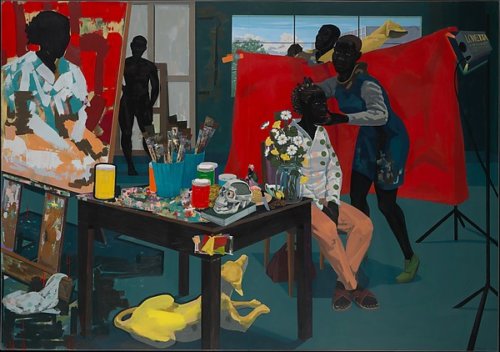5 Art Exhibits to See This Winter in NYC
If you live anywhere with a serious Winter, now is the time to stay indoors– but that doesn’t mean you can’t get out. Check out our favorite museum exhibits in NYC below!
A Body in Fukushima
The Cathedral of St. John the Divine, through March 12, 2017
The nuclear disaster at Fukishima Daiichi is often discussed in colossal terms: the decades of work ahead, the tons of waste, the millions of lives affected. Into this narrative, Eiko (in collaboration with historian and photographer William Johnson) quite literally introduces herself and her body with the series of photographs A Body in Fukushima. The result is a series of hauntingly beautiful photographs of Eiko in various irradiated areas, caught between motions. Though many of Eiko’s photos feature homes and buildings, the “Tabito and Kifune Shrine” specifically focuses on the “mountains in Fukushima used to be popular destinations for foraging. Impossible to decontaminate, the forests now have little human contact.” Staged in the vast halls and reaching ceilings of St. John the Divine, A Body in Fukushima is a truly singular experience, one that keeps alive the pain and devastation of disaster.
Kerry James Marshall: Mastry
At The Met Breuer, through January 29th, 2017
Currently housed on the upper levels of the Met Breuer is Kerry James Marshall: Mastry, a retrospective of artist Kerry James Marshall’s work to date. Marshall combines mediums in his paintings and his work as a whole seeks to challenge stereotypical representations of black people in society, and to secure a place in the Western canon for the black figure. Of particular interest to GC readers are Marshall’s series of Garden Project pictures, which depict public housing developments in Chicago and Los Angeles as bucolic retreats; the set of five were created at a time when they existed in the public imagination as dangerous urban projects.
Winter Garden
At The Whitney, through Februrary 5th, 2017
Using recycled materials (many of which are salvaged from older works), Virginia Overton has created a “sonic garden”, which reimagines the traditional botanic sculpture garden– finding beauty and curiosity in sound rather than sight. What Winter Garden lacks in substantial plants, it makes up for with its thought provoking architecture about how and what defines a garden, and what natural elements are a part of it. Earlier this year, the tubs (now overturned) were filled with aquatic plants, which had air pumped to them through the towering windmills (still on display). With the barrenness of winter ahead, the tubs have been installed with microphones that amplify the sounds of the air still being pumped to them. Rather than natural elements, wind accentuates the outdoor space (located on the Whitney’s terrace, with views of the Hudson River and the Highline).
Pixel Forest
At The New Museum, through January 15th, 2017
From Swiss artist Pipilotti Rist comes Pixel Forest, a large scale, multi-decade multimedia installation that splices the natural world with the digital. Rist’s work is set up across three floors and spans her early work from the 1980s (which explores how the female body is represented) to her more current projects, which involve whole room video projects intended to transform spaces into “dreamlike environments”. Debuting at Pixel Forest is a new, somewhat self-referential installation, which tracks the evolution of technology since Rist began her work.
Black Cowboy
At The Studio Museum in Harlem, through March 5th, 2017
A collection of photographs from different artists, Black Cowboy seeks to combat the generic, Hollywood image of the cowboy: an ultra American John Wayne type in a dusty hat, riding down a wide, sandy main street past the creaking doors of the saloon, guns at the ready. In reality, cowboys were predominantly people of color, and Black Cowboy honors their neglected history while drawing attention to the cowboy in its modern incarnation, dispelling the notion that cowboys are a relic of the past, or a feature of the rural Texan landscape. Altogether the images work to diversify the idea “American”, resulting in a concept that persists in the cultural imagination.







































